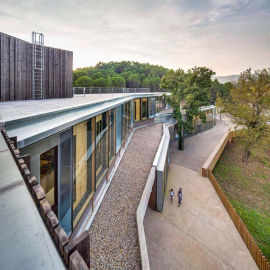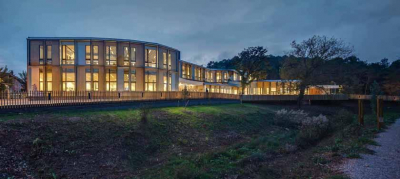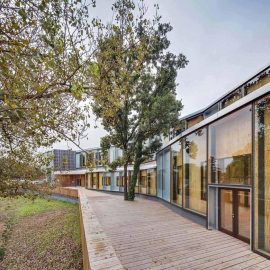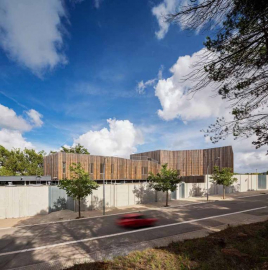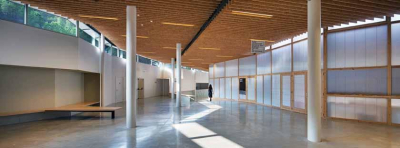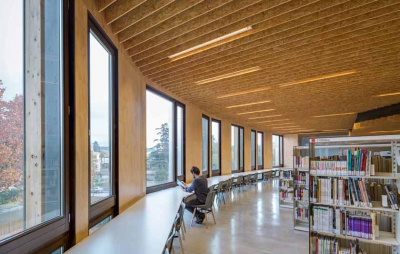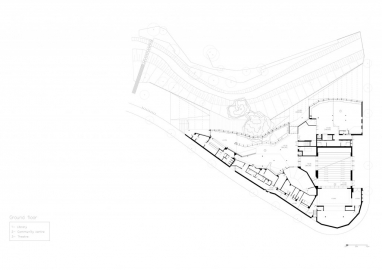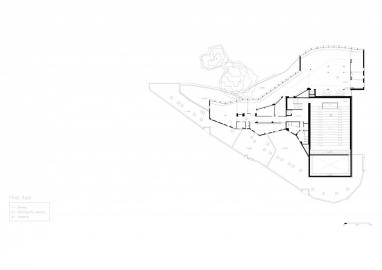El Roure Centre and La Ginesta Library
Begues, a municipality located in Garraf Natural Park, required a library, a community centre and a multipurpose theatre. To carry out the project, in which several local organizations and three different administrations are participating, a triangular plot which goes along the edge of Begues Stream was arranged.
The design process has crystallized a chain of synergies among organizations, administrations, technicians, citizens and the place itself. It began with the definition of an agreed and adequate functional program and it culminated in the name s choice by the citizens of Begues and the cataloguing process of a downy oak for its cultural value. Two main ideas underpin the conception of the new facility: to generate a confluence "inner square" and to tune into the environment revitalizing the stream. The project outlines a single building which gathers the three services, creating a community space, a place where people meet, which will enhance citizen interaction, cultural synergy and sustainability in its construction and management. The architecture that hosts a facility of this kind should be diverse and pluricentric in order to support a wide variety of users and foreseen activities, but it must also have the ability to strengthen and harmonise the relationship between organizations and users. The project begins with the definition of a foundation core, an agora able to attract and articulate around all areas defined in the functional program, a place where all users can identify themselves as belonging to it. The triangular plot is located at the bottom of a hill and bordered by a stream. The building accepts the limits of the plot as its own and occupies the entire place to achieve a horizontal construction integrated into the landscape of the stream and which can accommodate the lobby. The design recovers the stream and the collective memory of a pool (popular place for summer recreation). For this reason, the main facade is oriented to the north, reassessing this forgotten landscape, revitalizing the ecosystem and promoting a new relationship with the users of the centre. The building therefore aims to be a stream, a meander and a pool, flowing and reflecting the environment. The profile of organic geometry of the facade reflects the reverberation of the winding meander, generating a new access path and embracing the oak that names the Centre; its materiality is mirrored (to reflect and multiply the landscape in each piece of glass) and biospherical (to respect the naturalness of the environment).
Inside, each part of the program finds its natural place, almost respecting the hydraulic logic by which erosion and sediment define the edge of the bank of the stream. Thus, the inside is organized in longitudinal layers tracing the line of the stream and resulting in more or less dilated spaces, which have a progressive materiality more dynamic, fluid, clear and watery near the facade of the stream and more solid, opaque, private or stony in front of the mountain. The library is developed along this opening landscape facade which offers magnificent sightseeing options. The theatre, the rehearsal boxes and the various more closed type services are in the last layer or farthest place of the stream. All these spaces are articulated through an agora whose morphology, materiality and natural lighting procure a natural atmosphere which recalls the one enjoyed touring the stream. Designed with sustainability criteria, the building has type A Energy Efficiency National Certification. Its main features and benefits are Passive design reducing energy consumption compared to baseline, a heating and DHW supplied by a Biomass Central, the use of renewable materials and a rainwater harvesting system.

